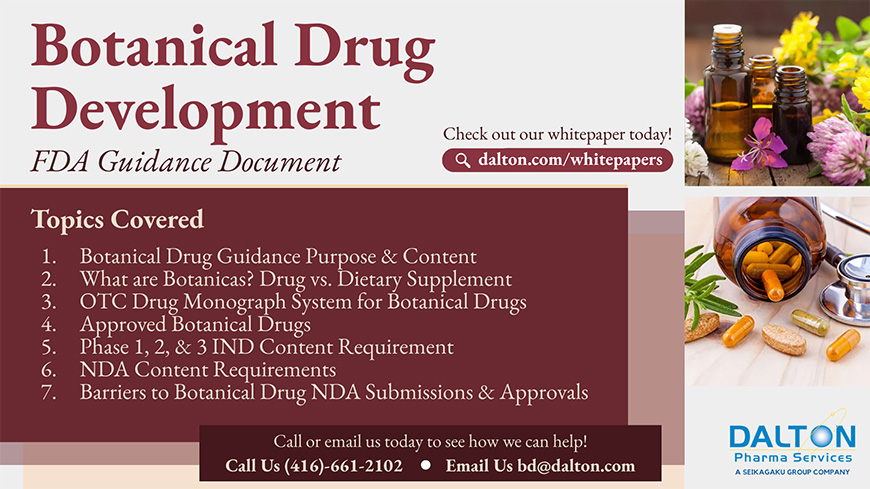
White Paper: Botanical Drug Development Guidance
Published February 2023
Abstract:
The US FDA published a guidance document titled "Botanical Drug Development" in 2016 to provide recommendations for developing new drug applications (NDAs) and investigational new drug applications (INDs) for botanical drugs.
Botanical drugs are complex in their chemical and biological composition, making it challenging to identify the active ingredient, characterize pharmacology, demonstrate therapeutic efficacy, and ensure quality consistency. The FDA approves botanical drugs as prescription drugs if they are intended for the human diagnosis, cure, mitigation, treatment, or disease prevention.
The agency regulates botanical products as dietary supplements if they are designed to supplement a diet. Only two US botanical NDAs have been approved as prescription drugs: Veregen and Fulyzaq. The guidance suggests detailed CMC information for early-phase development, but the quantity of data depends on the drug's stage of development, known or suspected risks, and existing human experience. The FDA OTC drug review includes several botanical medicines, such as cascara, psyllium, and senna. To modify an OTC drug monograph, a citizen petition or Time and Extent Application may be used. In addition, the CDER Botanical Review Team works on common botanical issues with the Office of Dietary Supplements and the FDA's Center for Food Safety and Applied Nutrition.
Keywords: Botanical drug development, FDA guidance for botanical drugs, Botanical NDAs, Chemical and biological complexity of botanical drugs, Plant specialized metabolites, Botanical product regulation, OTC drug monograph system, Sinecatechins (Veregen), Crofelemer (Mytesi), Clinical development of botanical drugs, Chemistry, manufacturing, controls (CMC) information, Toxicology requirements for botanical drugs, Drug Development
Click here to view White paper: Botanical Drug Development Guidance